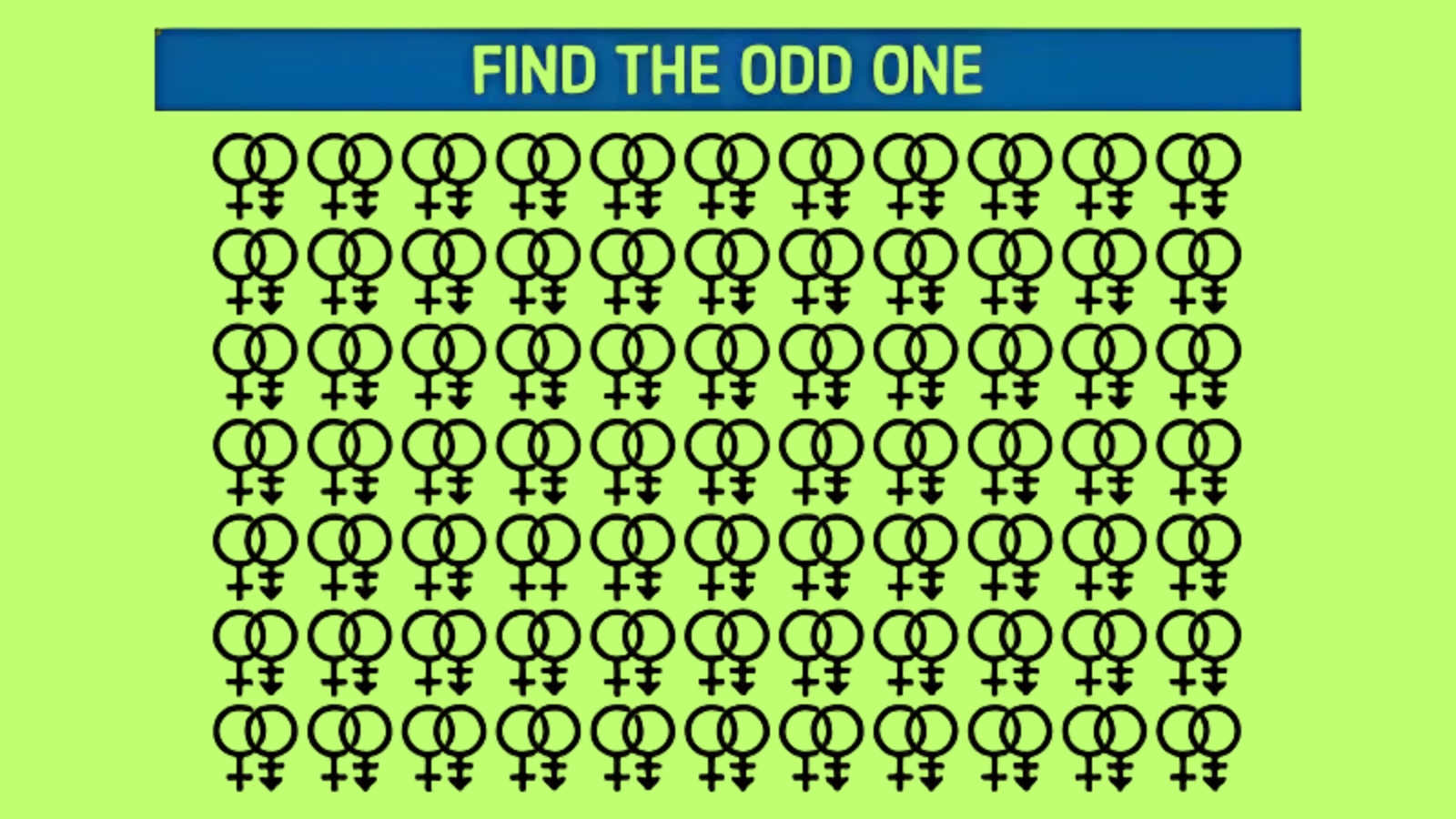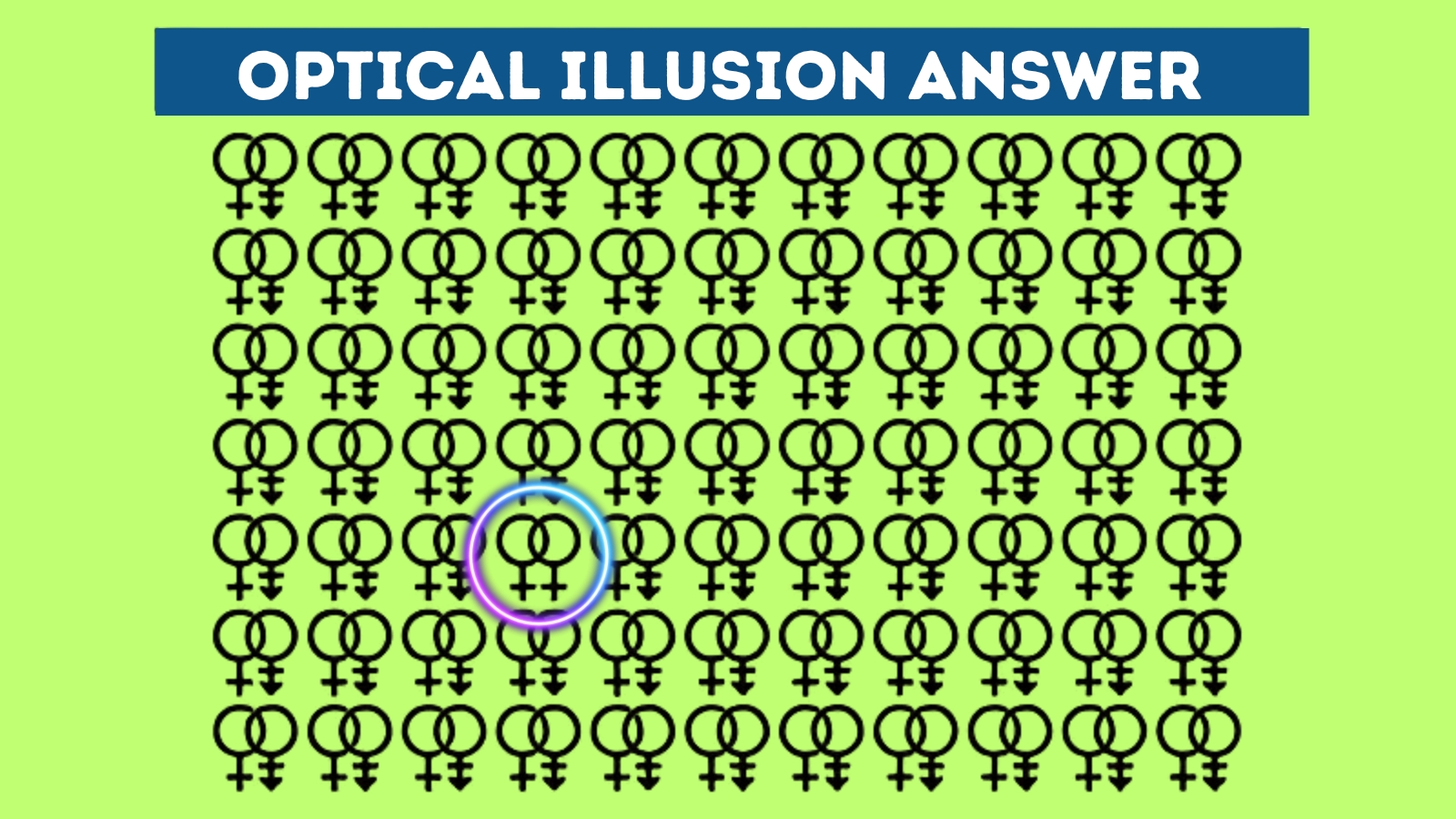If you like brain teasers (and honestly, who doesn’t?), here’s one that’ll make you pause and squint: an optical illusion puzzle from the Times of India in which you must pick out the odd symbol among many nearly identical ones. It sounds simple — but the devil is in the detail. Let me walk you through the puzzle, how to approach it, why it matters, and some tips (because yes, you can train yourself to get better).
The Puzzle: What’s going on here?

So, here’s what the TOI article lays out. You see a grid (or cluster) of symbols. Most are very similar: two interlocked circles with a cross beneath (kind of like a gender symbol, but multiple of them). Your mission (should you accept it) is: Find the one symbol that doesn’t quite match the rest. In other words, spot the “odd one out.”
At first glance, they all look the same. You might think, “Come on, there’s no difference!” But if you zoom in, if you study carefully — there is one that has a subtle variance in alignment, in spacing, maybe in how one circle overlaps, or how the cross is attached.That’s the trick: not glaring differences, but almost imperceptible ones.
How to Spot the Odd Symbol (Step by Step)
Let’s break down a good strategy you can use (and yes, I do this when I try these puzzles too):
- Start systematically. Don’t randomly jump around. Begin at the top row, move left to right, then go down. This ordered scanning helps prevent you from skipping parts. The article recommends exactly that.
- Compare features. Focus on small things: the relative placement of circles, how perfectly the cross is centered, whether lines are skewed, overlaps are slight.
- Avoid bias. Just because something “feels off” doesn’t mean it is. Our eyes play tricks, especially with repeated patterns. So don’t jump to conclusions without checking.
- Zoom in if possible. If you’re viewing this on a screen, magnifying helps. The article explicitly suggests zooming digitally to detect those minute inconsistencies.
- Be patient. These puzzles reward calm, close observation. If you rush, you’ll miss it. That patience is part of the mental workout.
Once you go row by row, comparing each symbol, suddenly the odd one “pops” — your brain flags the oddness. The TOI article says: “nearly all of them look like two interlocked circles and a cross below. But there is this particular symbol that has a slight but very fundamental difference which will make it the ‘odd one out.’”
They even provide the answer image to confirm. If you find it, high five. If not, that’s okay — it’s about training your perceptual muscles.
Why Bother with These Puzzles?
You might wonder: “Is this just fun and games, or does it really help?” Turns out — yes, it helps. To be fair, puzzles like these carry cognitive benefits beyond mere distraction.
- Deep focus & concentration. To detect micro-differences, your brain has to stay alert, resist distraction, and zero in on fine visual details.
- Pattern recognition skills. Our minds are wired to detect patterns. Puzzles like this teach you to notice when a pattern is broken.
- Patience & resilience. Because sometimes you stare and stare, fail, then stare again. That process builds mental stamina.
- Improved visual processing speed. Over time, with repeated puzzles, your brain becomes faster at spotting anomalies.
- Transfer to real life. This kind of focused visual discrimination can help in tasks like proofreading, data verification, quality control, or any job where small anomalies matter.
The article sums it up: “these puzzles are not only fun but also helps better your cognitive strengths.” And I agree — when you do these regularly, you’ll notice you catch small mistakes more easily, or spot things in pictures others might miss.
A Few Caveats & Thoughts
- On the flip side, don’t overdo it: spending hours trying puzzles may induce eye fatigue or frustration. A quick session is often better than a marathon.
- Also, not every optical illusion is made well — sometimes the “odd” difference is ambiguous or poorly drawn. That lowers the satisfaction.
- And lastly: if you don’t see it at first, don’t beat yourself up. Sometimes these puzzles are purposely finicky.
Optical Illusion Answer

So, there you have it. A simple-looking but deceptively tricky challenge: find the odd symbol among many nearly identical ones. If you followed the TOI article’s guidance (start top to bottom, zoom in, compare details), you’ll find the one outlier. Whether you got it or not, this little mental workout is good for your brain — sharpen your observational skills, train patience, get better at spotting patterns and anomalies.










